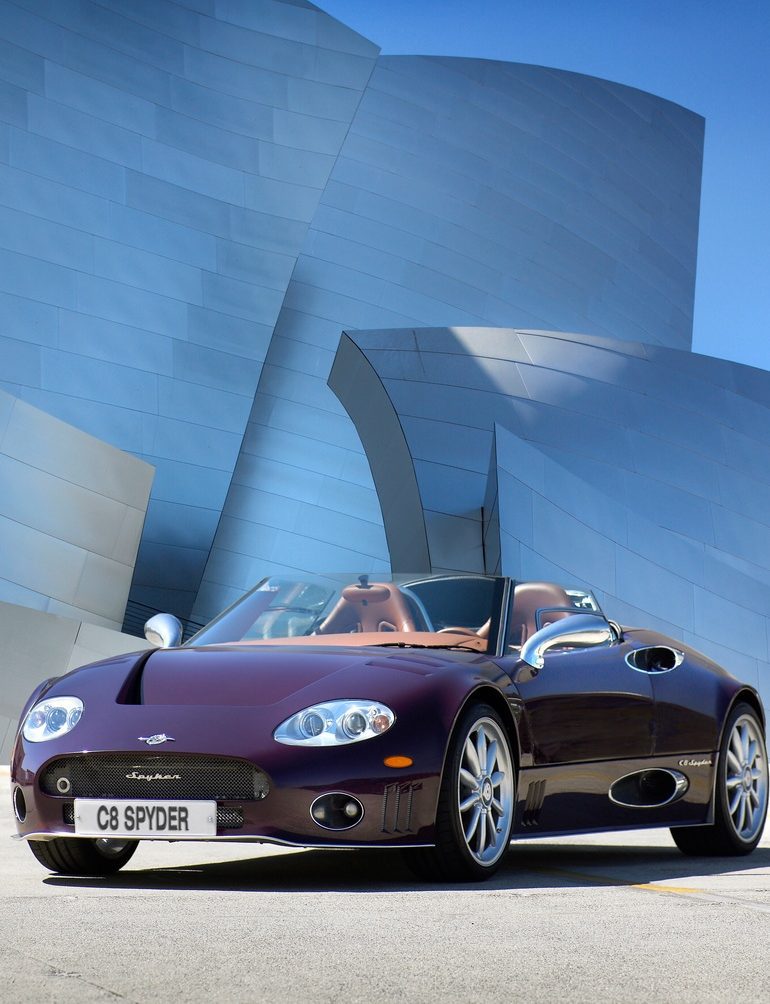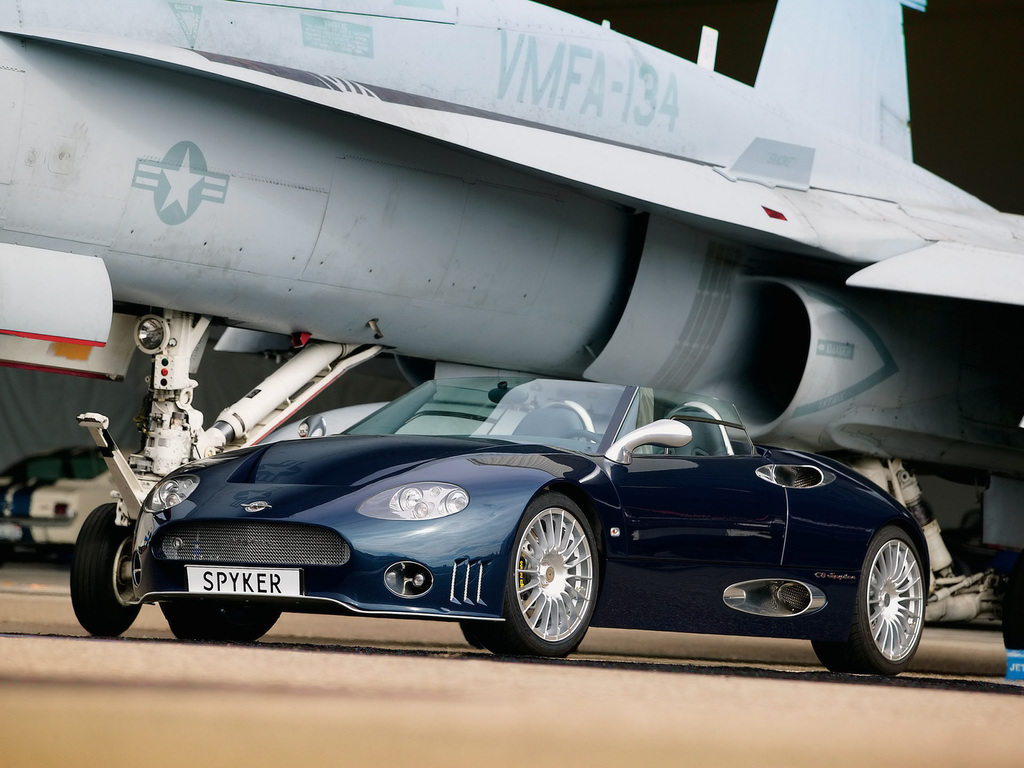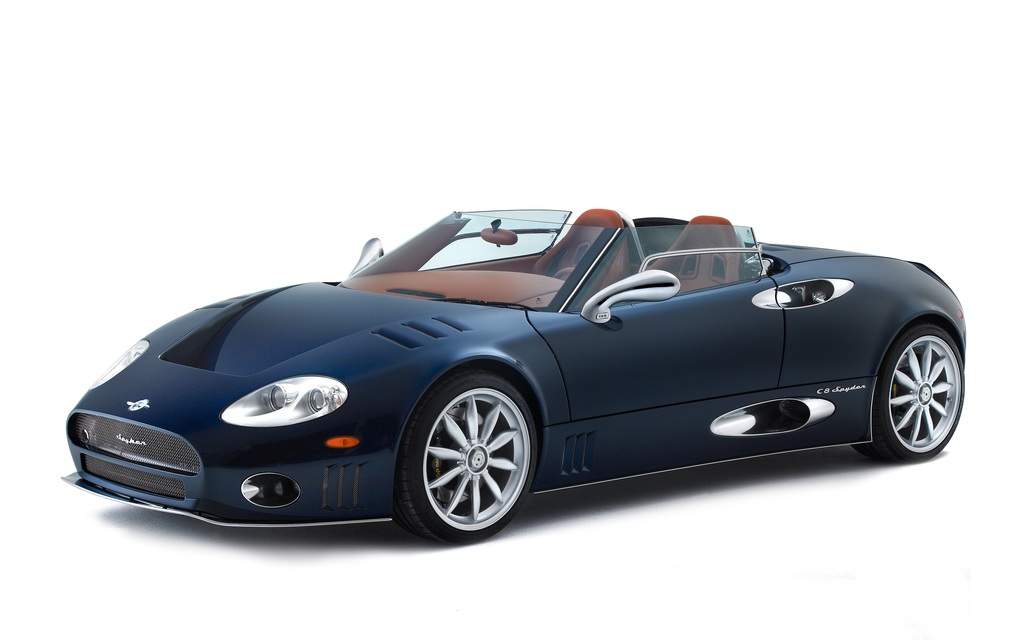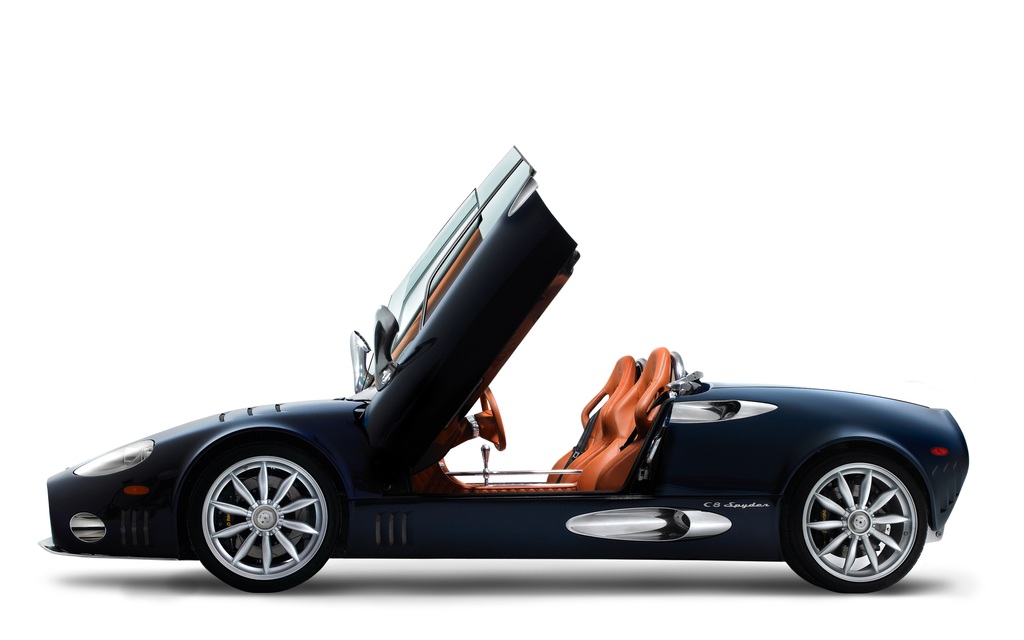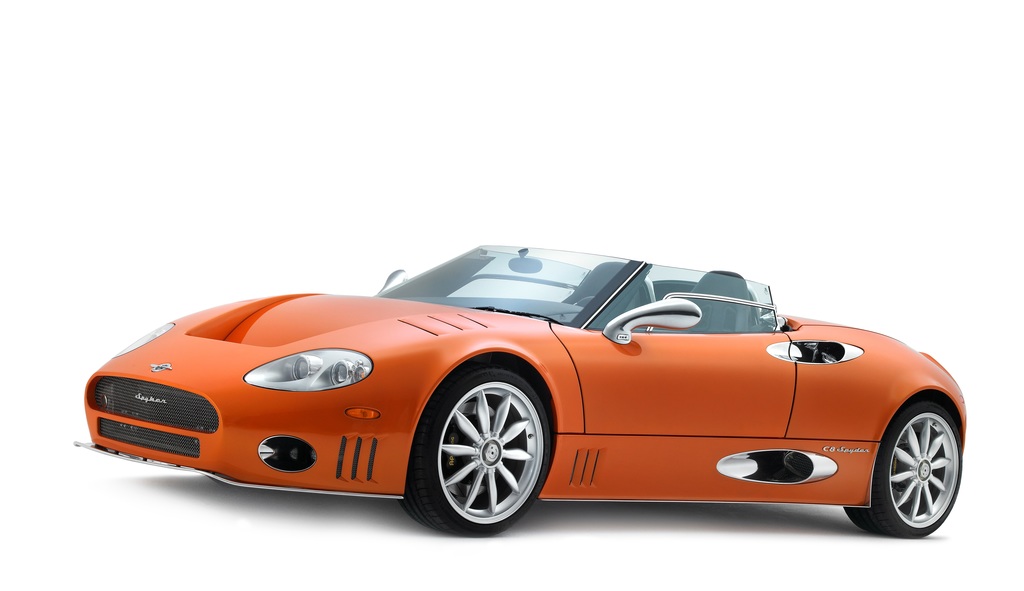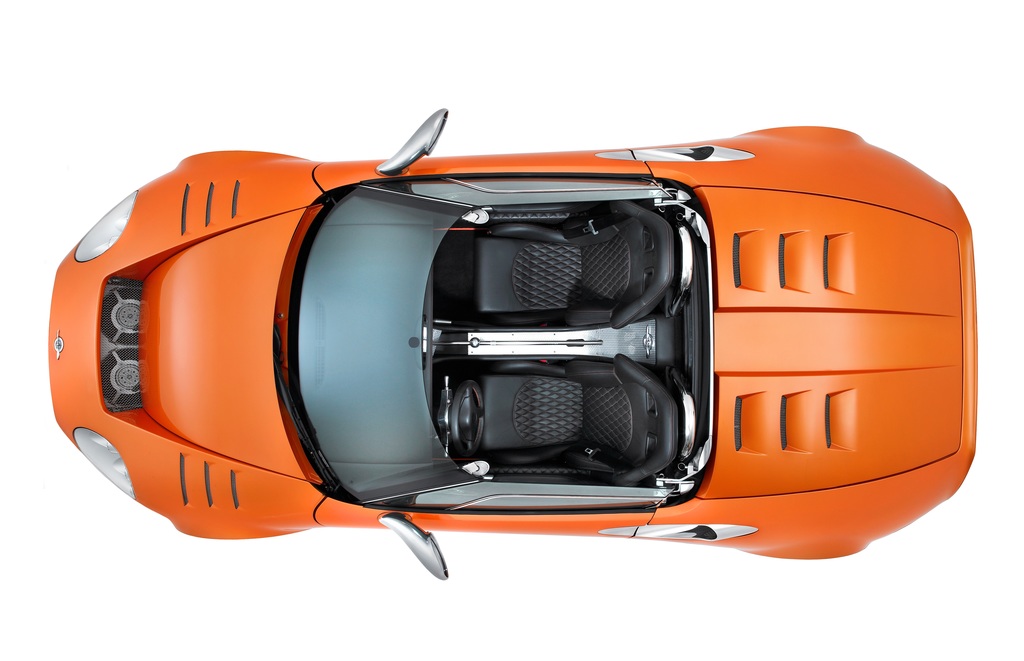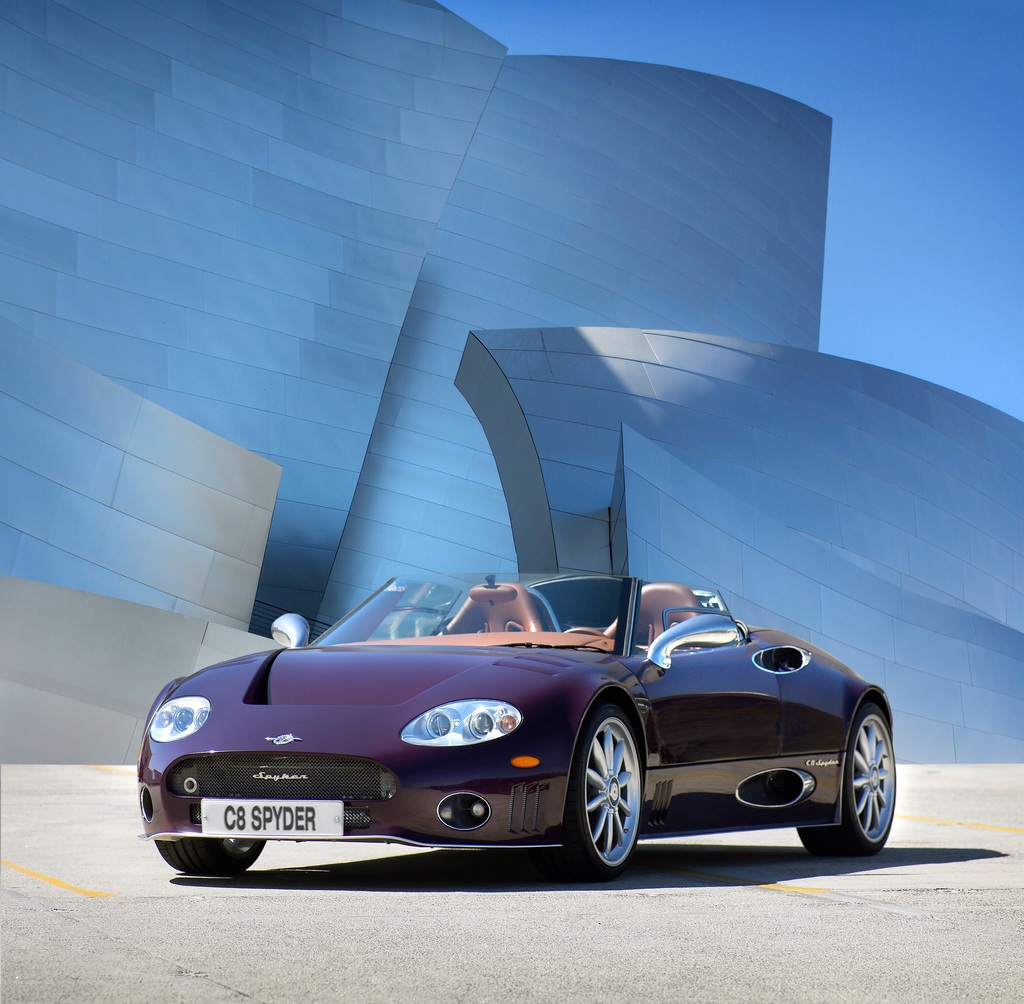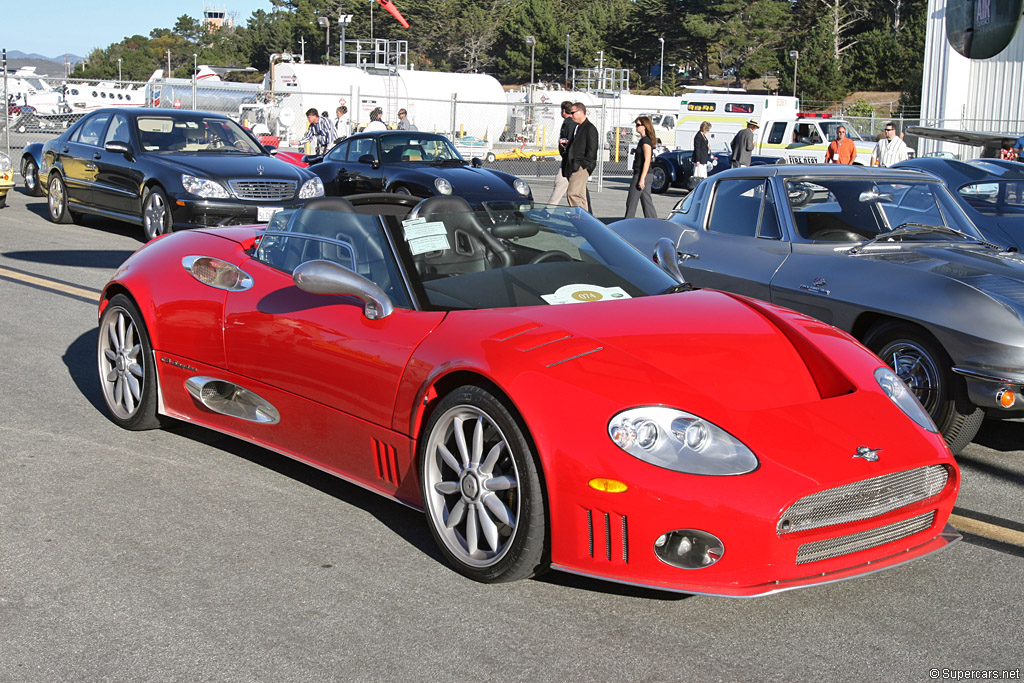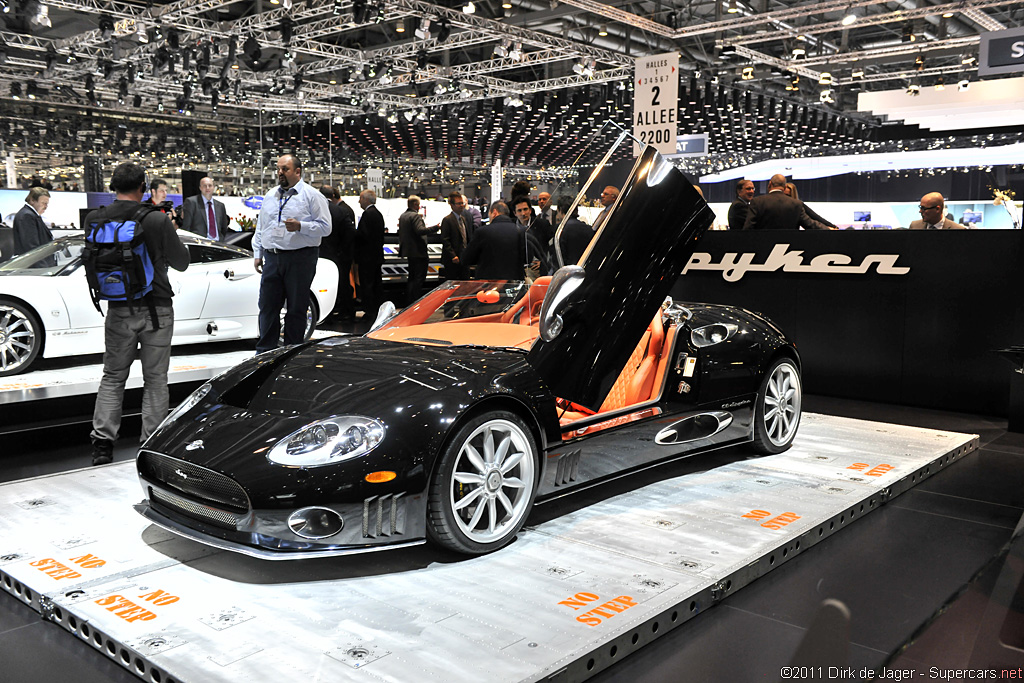2000→2011 Spyker C8 Spyder
he Spyker C8 Spyder was the first modern Spyker unveiled after Victor Muller reintroduced the brand in 2000. Unveiled at the Birmingham Motor Show in 2000, the stunning C8 Spyder was the highly successful first realisation of Muller’s vision of a company producing what no other automotive brand does: a beautiful supercar of utmost quality and craftsmanship with the performance to match its exquisite uncompromised interior and stunning exterior design. And the C8 Spyder sports direct references to the aviation heritage of the first trailblazing Spyker company of the late 19th and early 20th centuries. At its launch it represented the start of an incredible journey and it remains an iconic supercar.
The Spyker C8 Laviolette fixed head coupe soon followed the C8 Spyder. Launched at the Amsterdam Motor Show in February 2001 and technically similar to the C8 Spyder, the C8 Laviolette is an elegant car which offers all the excitement of driving in a high power sports coupe – its glass canopy reminiscent of a modern jet fighter.
Spyker C8 Spyder
As the first modern day Spyker, the C8 Spyder was conceived with powerful styling that boasts purposeful, bold and distinctive lines. The C8 Spyder was designed to remain timeless, and looks as impressive and relevant today as it did at launch more than ten years ago.
At the heart of the styling of the C8 Spyder is an explicit recognition of Spyker’s aviation heritage. This is exhibited through the countless design cues paying homage to early propeller aircraft, such as the exterior side-mounted polished aluminium air intake scoops behind the doors and, inside, the propeller rotor dash air vents.
Further bold styling statements include the wing mirrors, which are mounted within dramatic single-piece sculpted polished aluminium arms which extend gracefully from the top of the forward edge of the door. The electric/hydraulic-lift scissor doors provide a sense of high drama every time the driver and passenger enter and exit the cabin.
The lightweight manually-operated one-piece fabric roof is available in fifteen standard colours, or in the customer’s colour of choice as an option. The car was designed from the outset as a Spyder, and as such the strength of the A-pillars was deliberately specified to allow the omission of a header rail atop the windscreen. As there is no obstruction from the top of the dashboard and the bonnet line to beyond the vertical, the view for driver and passenger is unspoilt, pure and utterly spectacular. This harks back to vintage cabriolets of the first half of the last century and is unique amongst modern supercars.
Large capacity V8
Power for the C8 Spyder and C8 Laviolette models is provided by a naturally aspirated 4.2-litre Audi petrol engine, which is also fitted in Spyker’s new flagship C8 Aileron. This highly responsive 90-degree V8 power unit generates 400 ps at 6,800 rpm and an immense wave of torque with 480 Nm at just 3,500 rpm. Drive to the rear wheels is transferred through a manual six-speed Getrag gearbox.
With excellent power-to-weight ratios, both the C8 Spyder and C8 Laviolette accelerate from 0-to-100 kph in just 4.5 seconds and go on to reach a top speed of 300 kph.
Lightweight chassis
The short wheelbase models – so-called because the all-new Aileron boasts a longer wheelbase – feature a lightweight all-aluminium spaceframe structure. Although the C8 Laviolette is fractionally heavier than its open top counterpart (a mere 25 kilograms) it matches the impressive performance, agility and handling of the C8 Spyder.
Every short wheelbase Spyker C8 features fully adjustable suspension fabricated in stainless steel. To suit the wishes of its owner, a choice of ‘comfort’ and ‘competition’ set-ups is available, so the car can just as easily be configured for a long cross-country grand tour or a flat-out stint at the racetrack. This adjustability not only makes the iconic C8 supercars very versatile, it also reminds owners of the old days of motoring and racing, when many sportscar owners drove to the racetrack in the same car in which they competed.
Brakes, wheels and tyres
The C8 Spyder and C8 Laviolette are both fitted with a twin-circuit braking system with an adjustable brake balance, large diameter 356 mm (front) and 330 mm (rear) ventilated disc brakes, plus powerful six-piston aluminium brake calipers (front), four-piston aluminium brake calipers (rear).
Every Spyker shows its class in its details – as demonstrated by the standard and optional alloy wheels available for the short wheelbase cars. The 18-inch diameter ATS forged alloy rims feature single central locking wheel nuts and are fitted with 225/40ZR 18 (front) and 255/35ZR 18 (rear) tyres.
The optional magnesium 19-inch Aeroblade™ wheels not only look beautiful, they also enhance the car‘s performance. The special wheel design features the propeller motif from Spyker‘s logo and the streamlining and angle of the spokes helps to cool the brakes, while also improving aerodynamic properties of the car‘s ground effect.
Superbly comfortable
As appropriate for an all-aluminium, hand-built, mid-engined supercar with aerodynamic ground effect and electrically operated single-hinge tilting doors, the short wheelbase Spyker C8 cabin is superbly comfortable with a very special luxurious ambience. Leather is sourced from the Hulshof Royal Dutch Tanneries, renowned for high quality and the sensory soft-touch suppleness of their hides.
Both the C8 Spyder’s header-less windscreen and the C8 Laviolette’s glass canopy ensure excellent views of the outside world, while inside the Hulshof leather trimmed sport seats give excellent support and the adjustable steering column and pedal box ensure that a ‘perfect’ driving position can be achieved by all drivers. Close at hand, the gear shift selector which sits on the unique exposed transmission mechanism, is not only a beautiful design, but also delivers fast and accurate gearshifts.
The high-quality finish of the interior, with its leather trimming and aluminium detailing, underlines the performance-focused aviation-inspired design of the short wheelbase modern Spyker.
The dashboard finish and instrument gauges are a treat for the eyes and are exceptionally satisfying to the touch. The exquisitely detailed toggle switches provide visual clues to the racing heritage of this Spyker, while a dashboard designed by the renowned
In Detail
| submitted by | Richard Owen |
| type | Series Production Car |
| production years | 2000 – 2011 |
| built at | Zeewolde, Holland |
| coachbuilder | Coventry Prototype Panels |
| price $ | $ 270,000 |
| engine | Audi 90º V8 |
| position | Mid Longitudinal |
| aspiration | Natural |
| valvetrain | DOHC 5 Valves per Cyl |
| fuel feed | Electronic Fuel injection |
| displacement | 4172 cc / 254.6 in³ |
| bore | 84.5 mm / 3.33 in |
| stroke | 93 mm / 3.66 in |
| compression | 11.0:1 |
| power | 298.3 kw / 400 bhp @ 6800 rpm |
| specific output | 95.88 bhp per litre |
| bhp/weight | 313.73 bhp per tonne |
| torque | 480 nm / 354.0 ft lbs @ 3500 rpm |
| redline | 7500 |
| body / frame | Unit Aluminum |
| driven wheels | RWD |
| wheel type | Magnesium |
| front tires | 235/35ZR-19 Michelin Pilot Sport |
| rear tires | 265/30ZR-19 Michelin Pilot Sport |
| front brakes | Ventilated & Cross-Drilled Discs w/6-Piston AP Racing Calipers |
| rear brakes | Ventilated & Cross-Drilled Discs w/4-Piston AP Racing Calipers |
| front wheels | F 48.3 x 20.3 cm / 19 x 8 in |
| rear wheels | R 48.3 x 24.1 cm / 19 x 9.5 in |
| steering | Rack & Pinion w/Elec Power Assist |
| f suspension | Double Wishbones w/Adjustable & Inboard Koni Dampers |
| r suspension | Double Wishbones w/Adjustable & Inboard Koni Dampers |
| curb weight | 1275 kg / 2811 lbs |
| wheelbase | 2550 mm / 100.4 in |
| front track | 1400 mm / 55.1 in |
| rear track | 1580 mm / 62.2 in |
| length | 4050 mm / 159.4 in |
| width | 1880 mm / 74.0 in |
| height | 1080 mm / 42.5 in |
| transmission | Getrag Six Speed Transaxle |
| gear ratios | 3.67:1, 2.05:1, 1.46:1, 1.13:1, 0.92:1, 0.78:1 |
| final drive | 3.60:1 |
| top speed | ~300 kph / 186.4 mph |
| 0 – 60 mph | ~4.4 seconds |
| 0 – 100 mph | ~10.4 seconds |
| 0 – 1/4 mile | ~12.8 seconds |
| 0 – 100 kph | ~4.5 seconds |
| combined fuel econ eu | 13.3 L/100 km or 17.69 mpg-us |
| emission | 315 g/km |
| fuel capacity | 75 litres or 19.80 gal |


